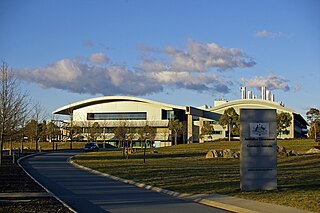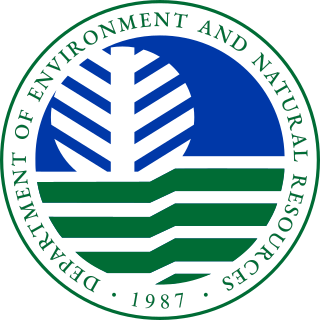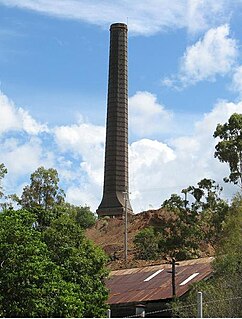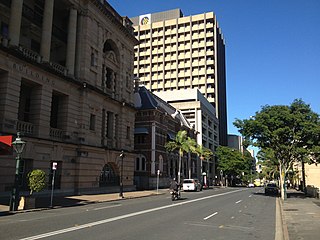The Department of Natural Resources, operating under the FIP applied title Natural Resources Canada (NRCan), is the ministry of the government of Canada responsible for natural resources, energy, minerals and metals, forests, earth sciences, mapping and remote sensing. It was created in 1995 by amalgamating the now-defunct Departments of Energy, Mines and Resources and Forestry. Natural Resources Canada (NRCan) works to ensure the responsible development of Canada's natural resources, including energy, forests, minerals and metals. NRCan also uses its expertise in earth sciences to build and maintain an up-to-date knowledge base of our landmass and resources. To promote internal collaboration, NRCan has implemented a departmental wide wiki based on MediaWiki. Natural Resources Canada also collaborates with American and Mexican government scientists, along with the Commission for Environmental Cooperation, to produce the North American Environmental Atlas, which is used to depict and track environmental issues for a continental perspective.

North Stradbroke Island, colloquially Straddie or North Straddie, is an island that lies within Moreton Bay in the Australian state of Queensland, 30 kilometres (19 mi) southeast of the capital Brisbane. Before 1896 the island was part of the Stradbroke Island. In that year a storm separated it from South Stradbroke Island, forming the Jumpinpin Channel. The Quandamooka people are the traditional owners of North Stradbroke island.

The Ministry of Natural Resources and Forestry (MNRF) is a government ministry of the Canadian province of Ontario that is responsible for Ontario’s provincial parks, forests, fisheries, wildlife, mineral aggregates and the Crown lands and waters that make up 87 per cent of the province. Its offices are divided into Northwestern, Northeastern and Southern Ontario regions with the main headquarters in Peterborough, Ontario.

Geoscience Australia is an agency of the Australian Government. It carries out geoscientific research. The agency is the government's technical adviser on all aspects of geoscience, and custodian of the geographic and geological data and knowledge of the nation.

The Department for Environment and Water is a department of the Government of South Australia. Created on 1 July 2012 by the merger of the Department of Environment and Natural Resources and the Department for Water as the Department of Environment, Water and Natural Resources, it was given its present name on 22 March 2018. It is responsible for ensuring that South Australia's natural resources are managed productively and sustainably, while improving the condition and resilience of the state's natural environment.

The Department of Environment and Natural Resources is the executive department of the Philippine government responsible for governing and supervising the exploration, development, utilization, and conservation of the country's natural resources.

Moonta is a town on the Yorke Peninsula of South Australia, 165 km (103 mi) north-northwest of the state capital of Adelaide. It is one of three towns known as the Copper Coast or "Little Cornwall" for their shared copper mining history.
The California Department of Conservation is a department within the government of California, belonging to the California Natural Resources Agency. With a team of scientists, engineers, environmental experts, and other specialists, the Department of Conservation administers a variety of programs vital to California’s public safety, environment and economy. The department’s mission is to manage California’s working lands. It regulates oil, natural gas and geothermal wells; studies and maps earthquakes and other geologic phenomena; maps and classifies areas containing mineral deposits; ensures reclamation of land used for mining; and administers agricultural and open-space land conservation programs. A division within the department dedicated to encouraging beverage container recycling has been moved into the newly created Department of Resources Recovery and Recycling (CalRecycle). Despite the similar name, the Department of Conservation should not be confused with the California Conservation Corps, another department within the Natural Resources Agency, which provides work experience for young adults. The Department of Conservation often collaborates with its federal equivalents, such as the U.S. Geological Survey.

Missouri Mines State Historic Site occupies Federal Mill No. 3 in Park Hills, Missouri, United States, which processed the lead and zinc ore that was mined in the immediate area for many decades. The site's old power building features a geological and mining history museum and interpretive center focusing on the state's historic Old Lead Belt.
The Department of Natural Resources and Water is a defunct Queensland Government department. Its functions are now part of the Department of Environment and Heritage Protection. The former department's functions included Aboriginal and Torres Strait Islander matters, Climate Change Policy and Science, Commercial Forestry, Commercial Water Services, Land, Native Title, Natural Resource Management, Catchment Management, Place Names, Quarry Sales, Recreation, Registration of Valuers and Surveyors and Water Recycling Strategy.

Coal is mined in every state of Australia. Mining occurs mainly in Queensland, New South Wales and Victoria. About 75% of coal mined in Australia is exported, mostly to eastern Asia, and of the balance most is used in electricity generation. Coal production in Australia increased 13.6% between 2005 and 2010 and 5.3% between 2009 and 2010. In 2016, Australia was the biggest net exporter of coal, with 32% of global exports, and was the fourth-highest producer with 6.9% of global production. 77% of production was exported.
The Department of Energy and Water Supply (DEWS) was a department of the Queensland Government which is responsible for the state's energy and water industries. The department's head office was at 1 William Street, Brisbane.

Queensland's energy policy is based on the year 2000 document called the Queensland Energy Policy: A Cleaner Energy Strategy. The Queensland Government assists energy development through the Department of Energy and Water Supply. The state is noted for its significant contribution to coal mining in Australia. The primary fuel for electricity generation in the state is coal with coal seam gas becoming a significant fuel source. Queensland has 98% of Australia's reserves of coal seam gas. An expansion of energy-intensive industries such as mining, economic growth and population growth have created increased demand for energy in Queensland.

The Mines and Geosciences Bureau (MGB) is a government agency of the Philippines under the Department of Environment and Natural Resources (DENR). The MGB is responsible for the conservation, management, development and proper use of the country's mineral resources including those in reservations and lands of public domains.
A Ministry of Energy or Department of Energy is a government department in some countries that typically oversees the production of fuel and electricity. The person in charge of such a department is usually known as a Minister of Energy or Minister for Energy.
The Department of Mines and Petroleum was a department of the Government of Western Australia until it was superseded by the Department of Mines, Industry Regulation and Safety on 1 July 2017. The department was formed on 1 January 2009, out of the former Department of Industry and Resources and Department of Consumer and Employment Protection, which were split into three new departments, the Department of Mines and Petroleum, the Department of State Development and the Department of Commerce.

Mount Morgan Mine was a copper, gold and silver mine in Queensland, Australia. Mining began at Mount Morgan in 1882 and continued until 1981. Over its lifespan, the mine yielded approximately 262 metric tons of gold, 37 metric tons of silver and 387,000 metric tons of copper. The mine was once the largest gold mine in the world.

The Museum of Lands, Mapping and Surveying is a museum at 317 Edward Street, Brisbane, Queensland, Australia. It collects and exhibits material relating to the surveying of Queensland and the maps created. It is a sub-branch of the Queensland Museum. It actively digitises and makes available historic maps and aerial imagery under open licences.














